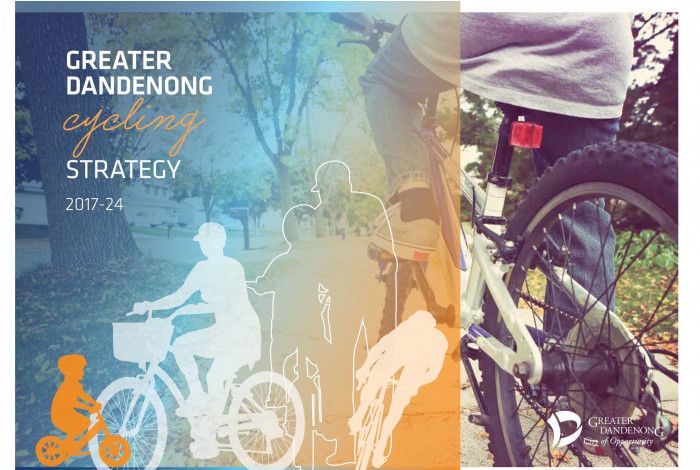The City of Greater Dandenong has a bicycle network of 98 kilometres of off and on-road cycling paths including the Eastlink and Dandenong Creek trails.
This bicycle network provides a number of benefits to the community and the region including:
- an alternate form of transportation for commuters
- an inexpensive form of transportation
- links between neighbourhoods, suburbs and areas of interest
- an opportunity to create a healthier lifestyle through physical exercise
- opportunities to access and enjoy a range of natural environments.
Whether your motivation is financial, environmental or health related, Council is committed to providing a safe and enjoyable bicycle network for you.
Cycling Strategy
As a form of transport, cycling is a low-cost, environmentally sustainable choice that eases traffic congestion and relieves parking pressures. As a way of getting fit, cycling is low impact, suitable for people of all ages and fitness levels and is an enjoyable social activity in which the whole family can get involved.
The City of Greater Dandenong Cycling Strategy 2017-24 has been developed to encourage cycling across the municipality by improving both the opportunities and infrastructure that contribute to an improved cycling culture.
Health benefits of cycling
- Weight loss
If you’re looking to shed some weight, cycling is a very efficient way to burn calories. Riding a bike for 30 minutes at a time can burn anywhere between 200-400 calories (depending on the users weight).
- Toning
Cyclists are known for having amazing legs. It makes sense when you’re pedaling away on a bike and your quads, glutes, and calves are hard at work propelling the bike. In addition, if you’re working that handlebar, you’re giving your upper body a workout, too.
- Muscle strengthening
Stationary bikes work tirelessly to strengthen the major muscle groups that support the back, leg, thigh, and hamstring muscles. There are two different strokes that are used on an exercise bikes, the push and the pull. Pushing down on the pedals is a great way to strengthen the quads, while pulling up is a great way to strengthen the hamstrings. Exercise bikes cause less stress on the knees than outdoor bikes since you’re riding on even terrain.
- Ease on the joints
Running, jogging, and many team sports and classes can be hard on your joints because of the amount of impact involved. Cycling is an exceptional way to get your heart rate up without putting excess stress on those precious joints. In fact, a bike puts even less stress on the back, hips, knees and ankles than walking. Proper form on the bike means your knee should bend just slightly on the down pedal stroke. If it’s too bent or too straight, you’ll need to adjust that saddle.
- Cardio
Cardio exercise works to lower high blood pressure, regulate blood sugar, and prevent heart attacks. Not to mention, it’s a great way to lose weight. Hopping on a bike is an exceptional way to work your body because it will help your heart become more efficient at pumping blood. It also works hard to increase the good cholesterol and lower the bad cholesterol in your body. To put it simply, riding an exercise bike or getting outside on a bike for 30 minutes a day for a handful of times per week can extend your life.
- Heart and health benefits
Riding an exercise bike can strengthen your heart and lungs, while also improving your body’s ability to utilize oxygen. Using a stationary bike regularly can also help regulate high blood pressure and improve respiratory function. For best results, it’s recommended that you exercise five days a week for 30 minutes.
- Energy-boosting
According to a study published in the journal 'Psychotherapy and Psychosomatics', bike riding improved energy levels by 20 percent and decreased fatigue by 65 percent as cycling triggers your brain to release the neurotransmitter dopamine, which is linked to energy.

